In this occasional series, we will explore the life and achievements of the greatest and most respected horologists of their time. This feature will focus on Daniel Quare, a celebrated clock and watch maker, inventor of the repeating watch and portable barometer originally fitted with legs but later designed to hang on a wall.
Daniel Quare lived through the turmoil of mid-17th century England, the Restoration, the Glorious Revolution, and the dawn of the Enlightenment, his legacy stands not merely as a reflection of his time, but as a mechanical heartbeat that helped shape it. Though often overshadowed by more flamboyant contemporaries, Quare’s genius was quiet, methodical, and enduring. His life was a testament to the confluence of craft, science, faith, and innovation in a world being remade by the tick of time.
Early Life
Daniel Quare was born, in Somerset or Devon, though precise records are elusive. He came of age in a nation still reeling from civil war and the regicide of Charles I. In this environment of uncertainty, Quare began his apprenticeship, probably in the 1660s, and emerged as a freeman of the Clockmakers’ Company of London by 1671. Described as a ‘great clockmaker’ at the time of his admission, he was probably second only to Thomas Tompion among his contemporaries.
Like many English craftsmen of the period, Quare was a Quaker, a member of the Religious Society of Friends. This affiliation would shape both his business practices and his ethical outlook, influencing the integrity and simplicity for which his work was known. His faith barred him from swearing oaths, a stance that occasionally placed him at odds with the dominant Anglican order, but it also marked him as trustworthy and dependable a man of his word, even without one.
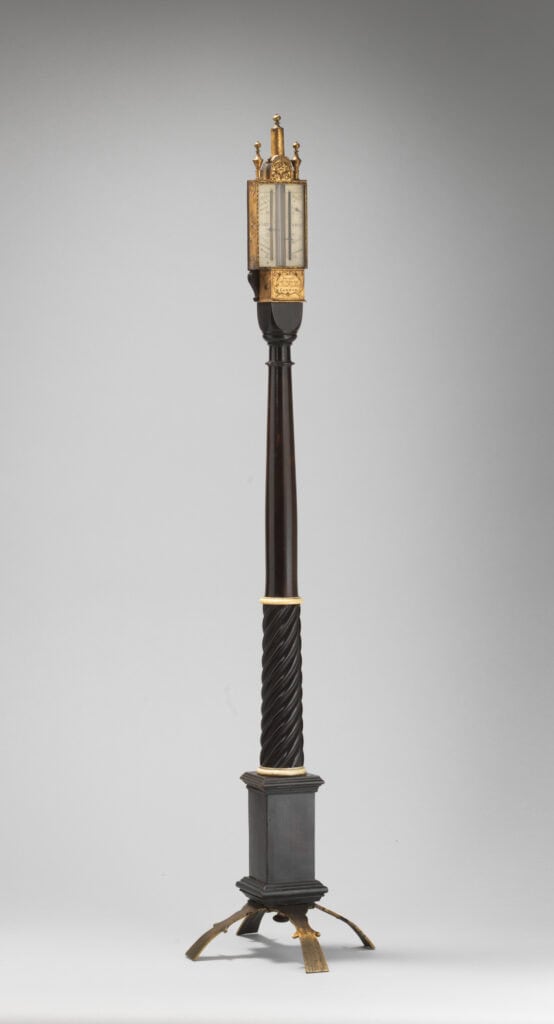
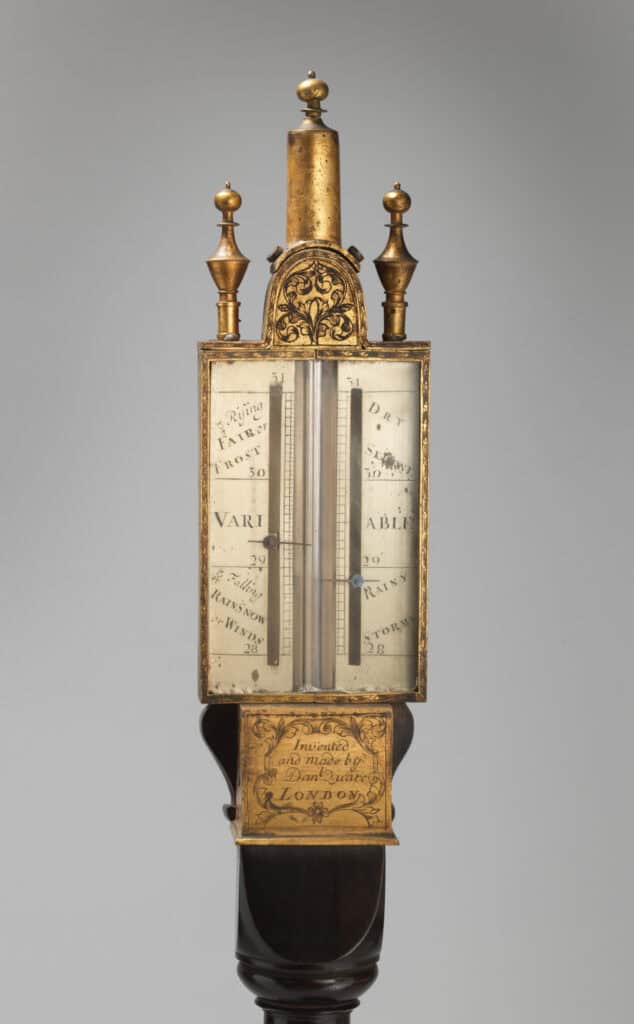
This barometer (above) was made by Daniel Quare, a leading London clockmaker who obtained a patent for a barometer design in 1695. This claimed that the barometer could be inverted without either spilling the mercury or allowing air to get into the tube.
The Rise of a Master
By the 1680s, Quare had established himself among the elite of English horologists. He produced table clocks, longcase clocks, watches, and barometers of extraordinary technical skill and elegance. His timepieces were not only functional instruments; they were works of art, often housed in finely crafted wooden cases with intricate marquetry and gilding as seen in the example below.
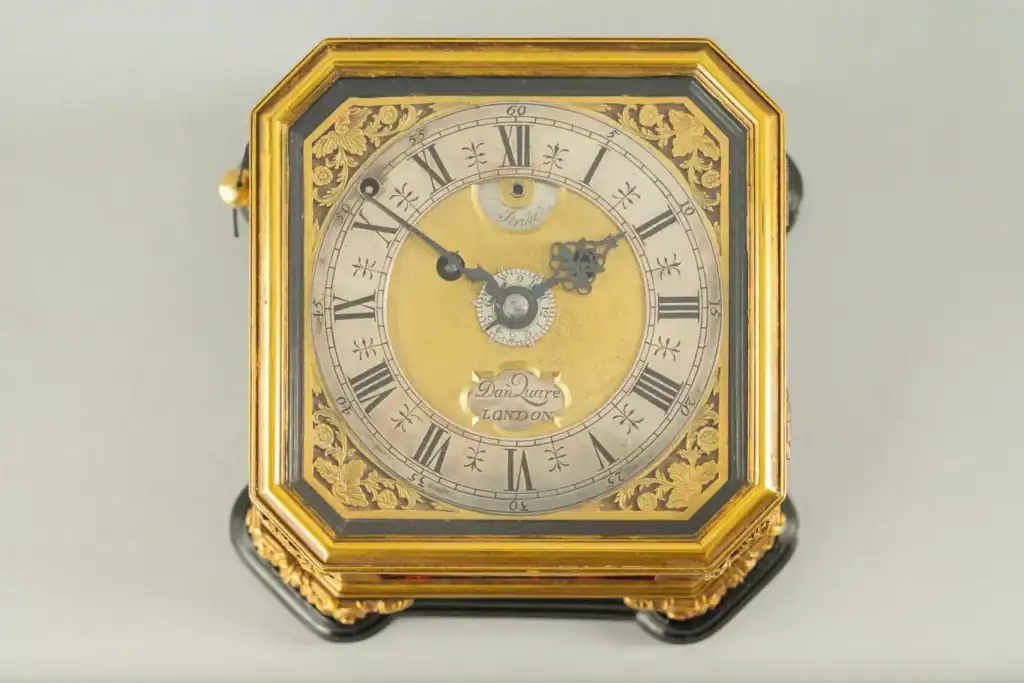
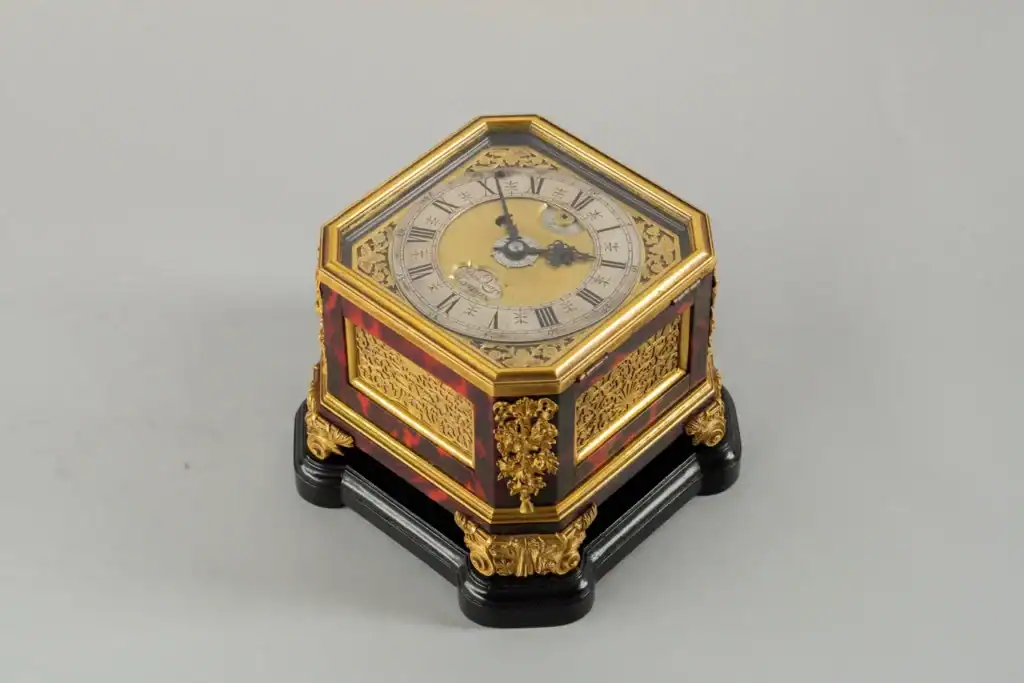
This red turtleshell and ormolu hour-striking horizontal table clock (above) has an alarm and quarter repeater. The clock’s case is a work of decorative art in of itself, brimming with high-specification details. These include the exotic and costly use of red turtleshell for the veneer that covers each side of the unusual octagonal shaped case. The clock also boasts numerous custom gilt mounts and decorations. Added extras also ensure that it functioned perfectly as a portable boudoir alarm clock. All this suggests that it was a special commission for a well-to-do traveller.
Quare’s reputation grew steadily. His work was in demand among nobility and royalty alike. In 1695, he was appointed Clockmaker to King William III, a coveted title that placed him at the very centre of English technological advancement.
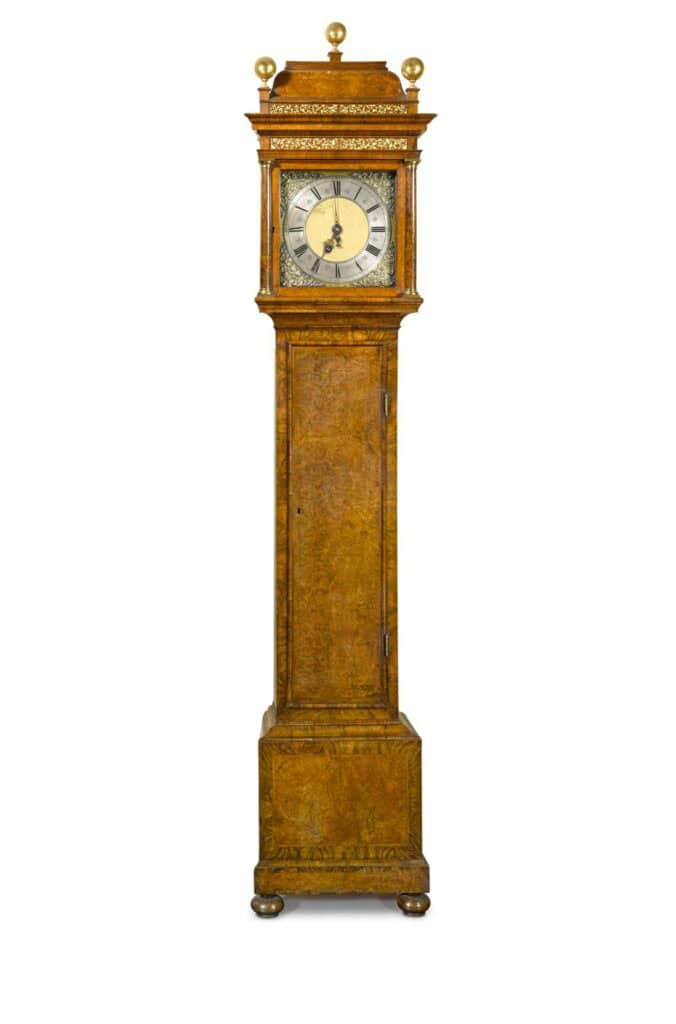
The oak case in the style of Daniel Marot, is veneered in walnut. The brass dial has date aperture, silver spandrels and applied chapter-ring signed: ‘Dan Quare London’. An additional signature ‘Daniel Quare, London’ is found underneath the chapter-ring. The movement, of year duration, has a going train of six wheels, anchor escapement and seconds pendulum. It was commissioned by Thomas, 1st Earl Coningsby (1656 – 1729) for a visit from King William III to his home. Later owned by Sir Richard Arkwright (1732 – 92).
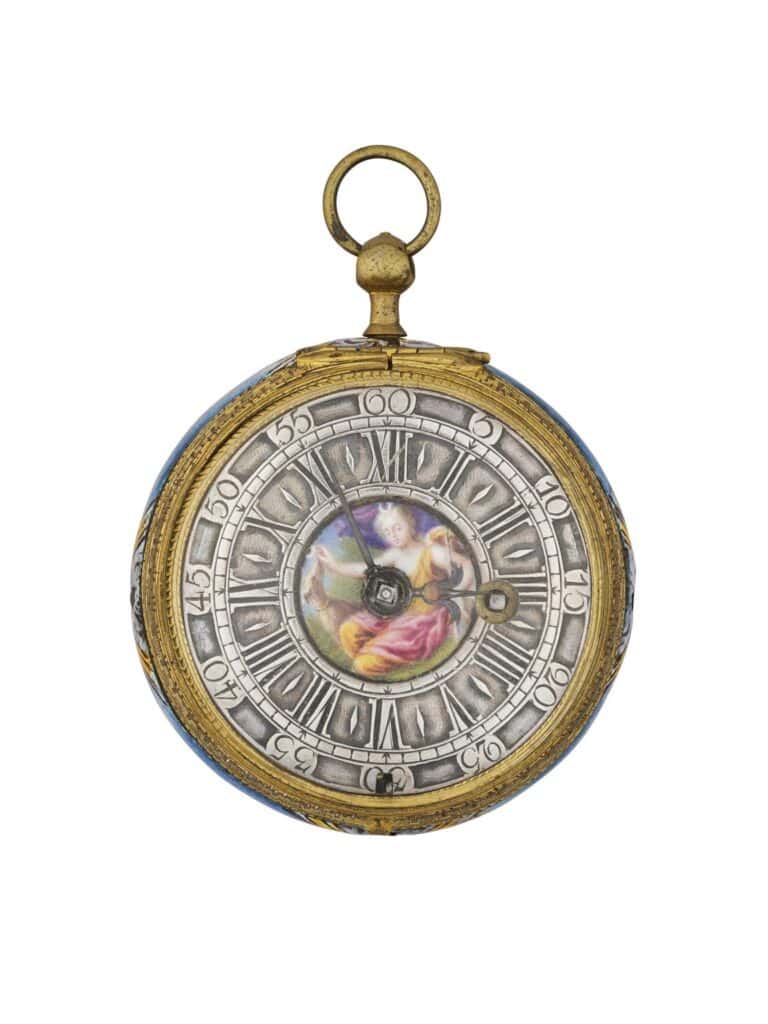
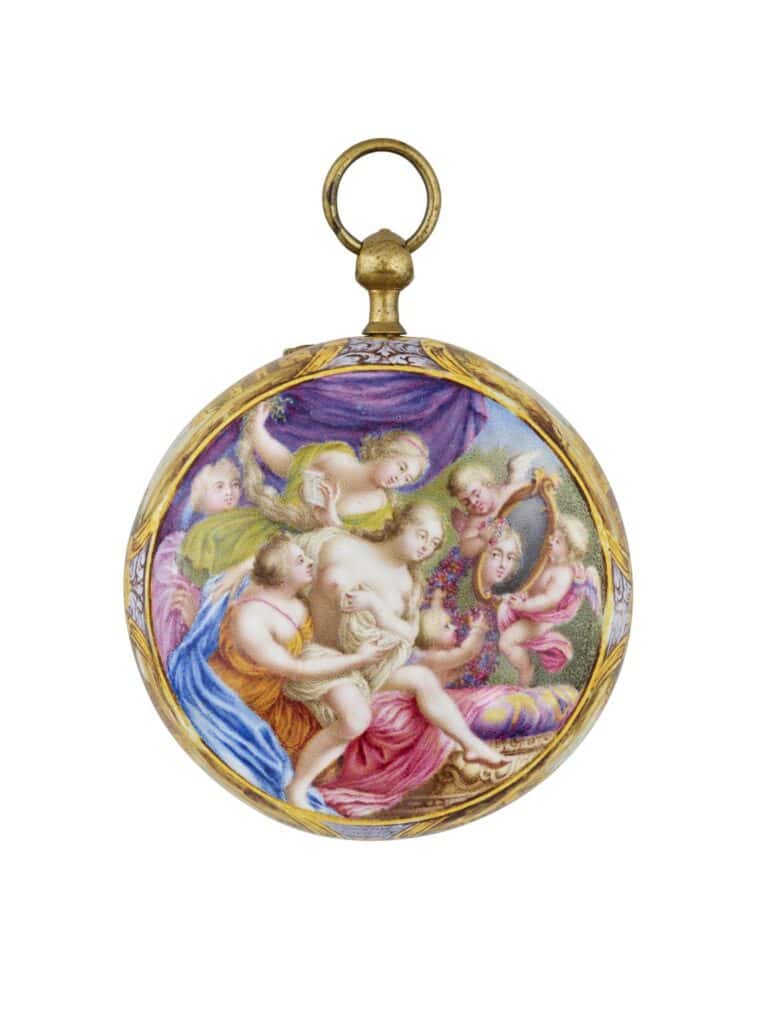
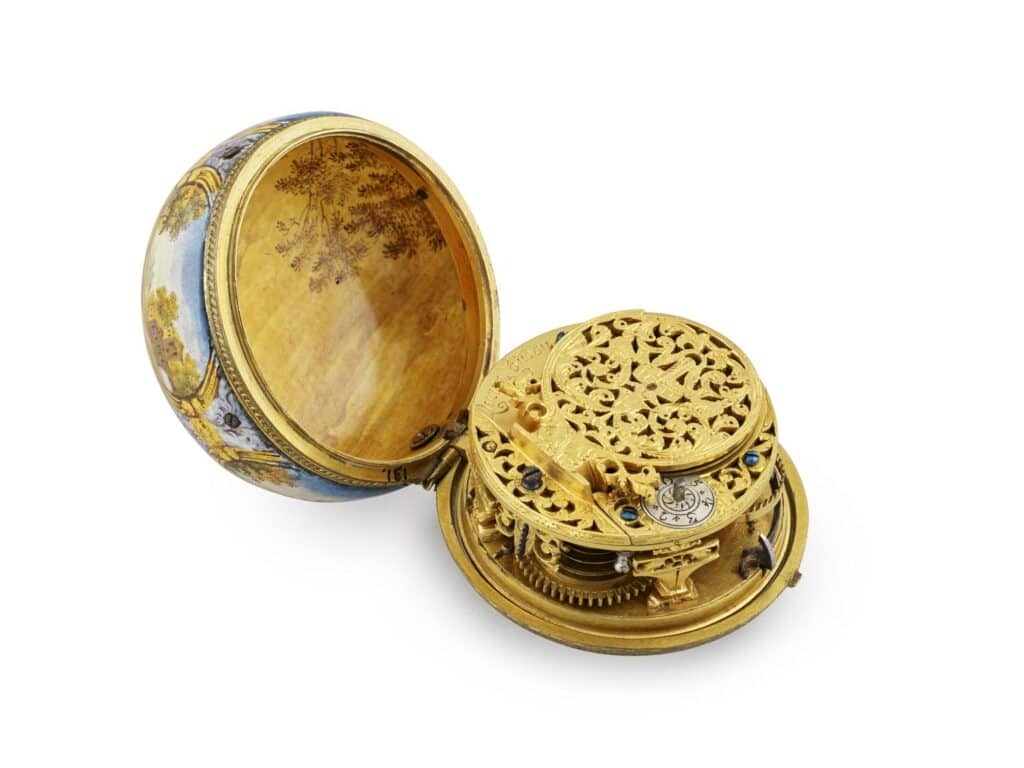
This exquisite verge watch by Daniel Quare c.1712, is contained in a painted polychrome enamel case signed ‘Les Frères Huaud’ with a yellow enamel painted interior. Silver repoussé dial with a Huaud enamel plaque in centre. Dial winding at 3 o’clock. Steel hands. Verge escapement with broad-foot winged balance cock. Movement signed ‘Quare, London’.
The Huaud (or Huaut) family were Geneva-based enamellers, known for their use of vibrant colours in their beautiful artworks. Their watch cases were used by watchmakers all over Europe.
Perhaps Quare’s most famous innovation came in 1680: a repeating watch mechanism that allowed the user to determine the time in the dark by activating a button or lever that would chime the hours and quarters. Though repeater watches had existed on the continent, Quare’s design was notable for being more reliable and simpler in construction.
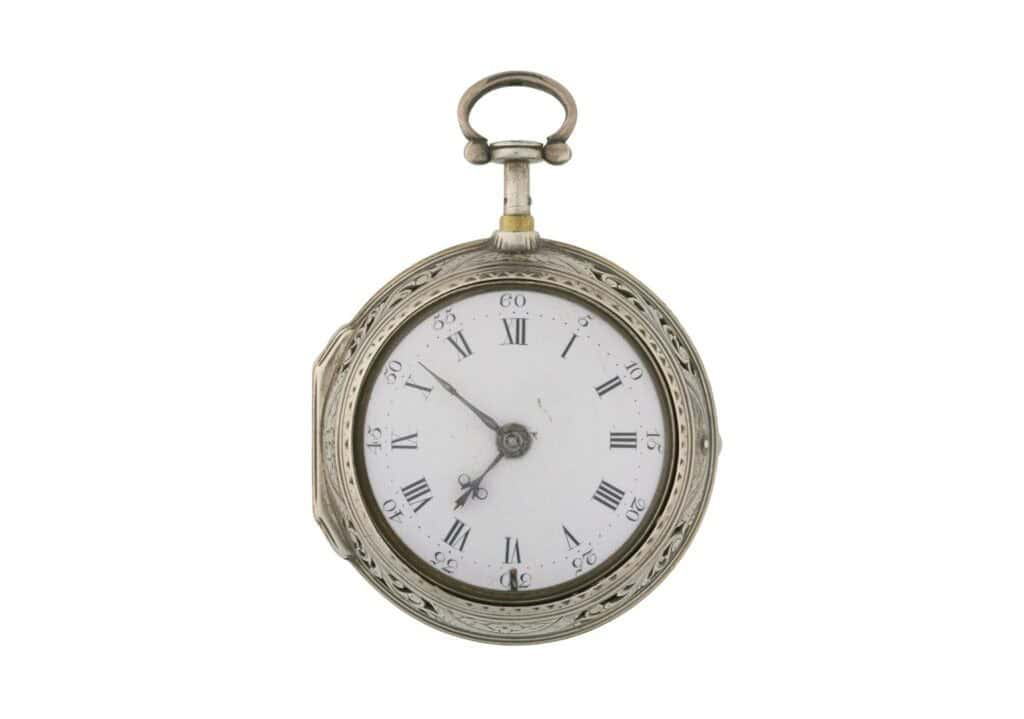
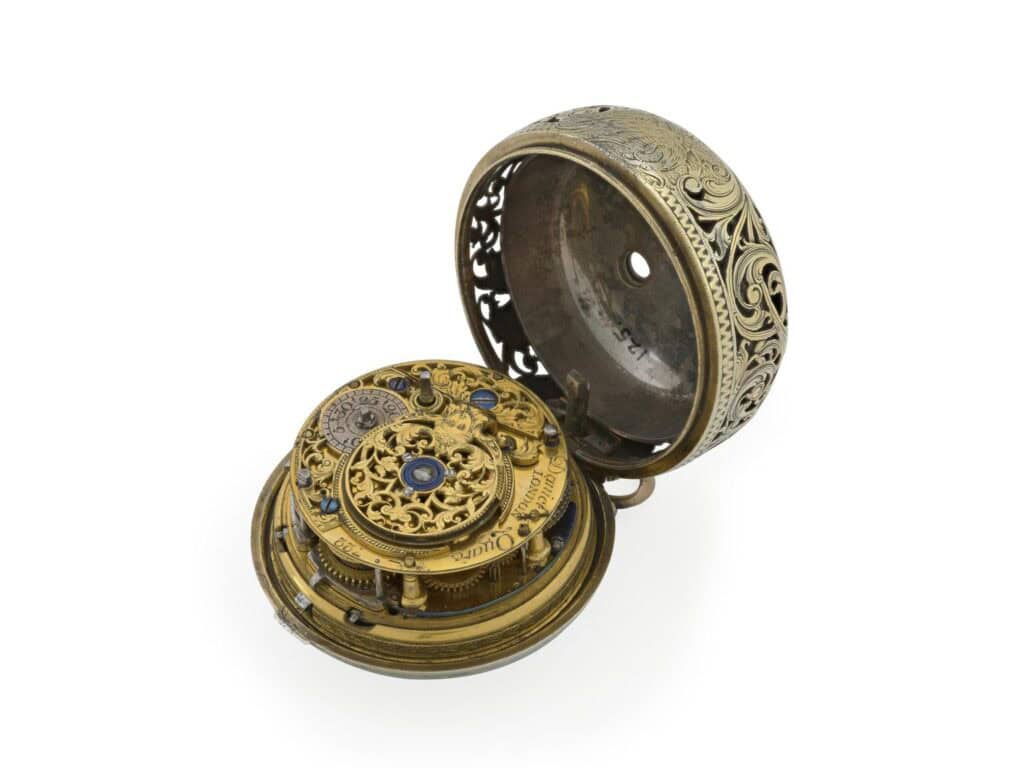
The pair cased repeating watch (above) by Daniel Quare, was made in England c.1710. Both silver cases are pierced and engraved. White enamel dial with steel beetle hands. Movement with verge escapement, diamond endstone, and repeating work. Signed on the backplate ‘Daniel Quare London 722’.
Later Life and Legacy
Daniel Quare became Master of the Clockmakers’ Company in 1708. Steven Horseman (d. 1740) became Quare’s apprentice in 1701 and his partner in 1718. He employed and partnered with several prominent apprentices and journeymen.
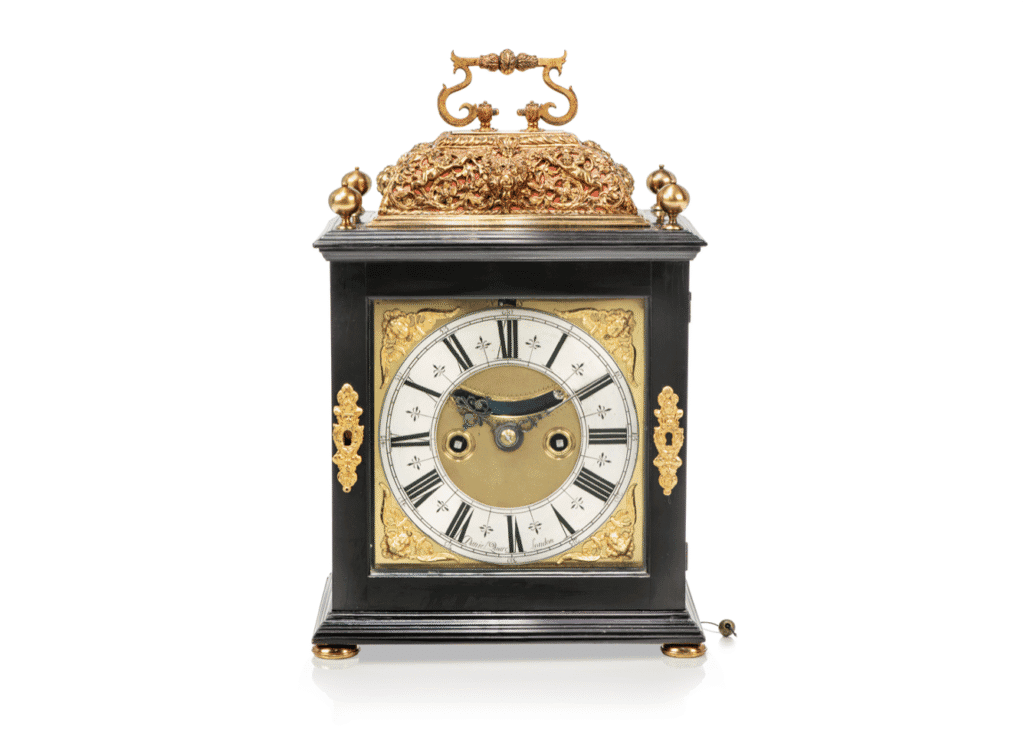
He was also deeply engaged in disputes over patents and technological improvements, most famously with Thomas Tompion, often regarded as England’s greatest clockmaker. The two clashed over the invention of the repeating watch, with the Privy Council eventually ruling in Quare’s favour.
Daniel Quare continued his work well into the early 18th century, eventually retiring around 1718 and leaving his business in the hands of Horseman. He died in 1724, likely in Croydon, south of London. Despite his relatively quiet life, he left behind a powerful legacy of craftsmanship, invention, and ethical entrepreneurship.
His commitment to fairness and his refusal to conform to the religious expectations of the day made him a model of integrity in an age of compromise. In an era when science and superstition still coexisted uneasily, Quare stood as a representative of reason, observation, and progress.
Hero image is an artist impression.
References:
- Symonds, R. W. English Clocks.
- Britten, F. J. Old Clocks and Watches and Their Makers.
- National Maritime Museum archives
- Worshipful Company of Clockmakers’ Records
- Christie’s Auction Catalogues


